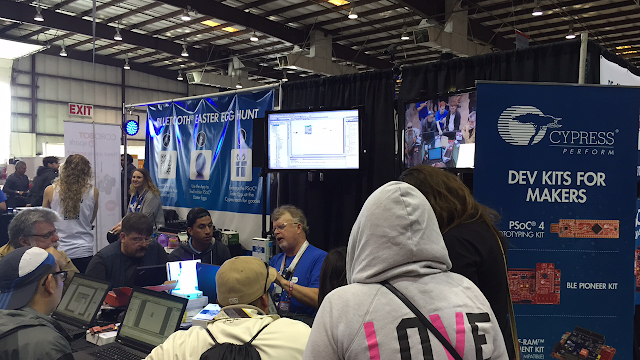10 Ways How Tech Brands Create a Product Ecosystem
Gagan Luthra of Cypress Semiconductor explains their PSoC ecosystem
Tech brands can be big and small but there is nothing better than to learn from the big tech brands. At the recent Maker Faire, we saw a lot of self-similarity amongst the chip makers (Intel, Atmel, TI, ARM and Cypress Semiconductor) aka tech brands on how they built their product ecosystems. Basically they did it with open access, education and community building. Even, Make Media itself has similar characteristics in their ecosystem - openness, education and community building. We speak with Gagan Luthra, product marketing manager of Cypress Semiconductor on how a tech brand like Cypress Semiconductor creates an ecosystem around their products. Why is an product ecosystem important? For a small company or startup, it can provide the reach that can be beyond borders. An product ecosystem is one that is open, accessible and self-sustaining. This following 10 'must' list can be scalable or combined depending on size of product or company. Check it out!
Brands must create and open accessibility to their company and products
People appreciate openness and accessibility to companies and their employees. Especially with technical products, access to the developer or engineer about a question or problem can turn a regular joe to a brand advocate. Gagan talks about how their product engineers engage in activities with their customers by either by going to "maker" events or by participating on company tech community boards.
Brands must educate and with education creates inspiration
Make Media's Dale Dougherty always talks about education creating inspiration. Educating people in ways that a brand's product can be used or developed is huge in a brand ecosystem. Gagan talks about how Cypress is education the educator through their University program or on-line webinars.
Brands must make their products accessible in cost and use
Samples are a great way for people to try your product. The 'freemium' model works this way and for tech brands, providing not only the free or low cost 'sample' is important but the supporting software or accessories around that 'sample' is important to creating an ecosystem. Gagan discusses how Cypress uses low cost development boards to enable the people in their ecosystem.
Brands must provide the necessary tools for products use
Tools come in various forms but enable the use of a tech brand's product. The tools can be the items mentioned on the following lists or can be actual tools to help developers, or engineers or customers develop or use your products. For a small brand, it can be as simple as setting up the user settings on a mobile device. Gagan discusses some of Cypress's PSoC developer kits and tools.
Brands must build supplementary technical communities
Augmenting your ecosystem with outside technical communities are very important to brands. Product enthusiasts have been doing it for years on BBS on autos, cameras and video products. In the tech area, they can be GitHub, Element 14 or even Reddit. These communities don't have to grow organically. They can be part of your strategy to build your ecosystem.
Brands must treat everyone equal
A lot of tech brands used to focus on the professional community and those in universities about to enter the professional community. Today, the high schooler, college dropout or hobbyist can be the next startup entrepreneur with a big idea. Everyone one of your customers and users in your ecosystem is important. Gagan talks about how Cypress engages people of all levels.
Brands must teach by example with use cases
Examples of use strengthen trust in a brand. Our beta work is important to a products success and usually we tell everyone about it. It is no different for tech brands. Showing everyone of some of the cool things that you did with your product is an excellent way of getting new people into your ecosystem. Gagan discusses how a community can teach one another with examples from the brand as well as the community.
Brands must create in-person opportunities to engage by offering events and/or seminars
At the end of the day, a face behind the words or online video is important. Learning about someone sometimes takes a conversation where one can learn from each other. Events and seminars provide those learning opportunities for everyone in the ecosystem. Gagan discusses some of the ways Cypress does face-to-face engagement.
Brands must find partners who can help the ecosystem
Partners can be important to an ecosystem. Partners can help in ways that by yourself you cannot do. For small brands, it might be business development partner or partner for an event. These people are important as they are part of a brand's ecosystem. They can help promote and reach people who are not the "radar" screen. Gagan talks about some of their distribution partners and how they help Cypress.
Brands must inform and engage through social media communities
With the internet being quite ubiquitous, information gathering has been equally that on social media. The standard is news and information pushing on twitter and general community engagement on Facebook. News about some of the company events and announcements can help connect people in your ecosystem to understand the brand and people behind it more. Gagan talks about how they use social media at Cypress.


Comments